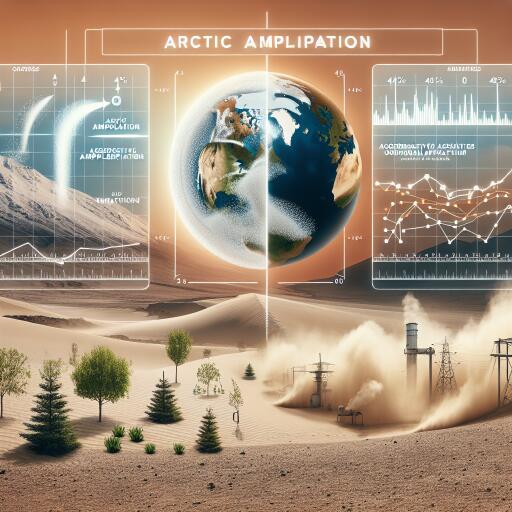
Exploring the Link: Arctic Warmth and the Decline of Dust in West and South Asia
In groundbreaking research spearheaded by Hong Kong Baptist University, scientists have uncovered a pivotal connection between the rapid warming of the Arctic and a significant decrease in dust levels across West and South Asia. This phenomenon, observed over the last two decades, marks a critical development in understanding the intricate ways in which global warming influences atmospheric dynamics and environmental conditions worldwide.
Dust aerosols, composed of particles like desert sand, salt, and even toxic metals, have long been recognized for their adverse effects on air quality, public health, food security, and even broader climatic patterns. In areas prone to arid conditions, these aerosols can be lifted by strong winds and carried across vast distances, impacting regions far removed from their origins. Notably, West and South Asia have frequently grappled with the challenges posed by dust storms, facing not only health risks but significant economic losses as well.
The recent investigation into this pressing issue has shed light on a key driver of these changes: Arctic amplification. This term refers to the accelerated warming of the Arctic region compared to other parts of the globe, a phenomenon that has profound impacts on weather patterns far beyond the polar areas. According to the study, this amplified warming has weakened the polar jet stream, which in turn has allowed cold polar air to migrate southwards. The result has been a shift in atmospheric conditions over the Middle East, South Asia, and the Indian Ocean, leading to a noticeable reduction in dust transport from desert regions in Northeast Africa to the Middle East.
Further analysis reveals a decrease in zonal winds across West and South Asia, influenced by a regional disparity in land-sea temperature. This discrepancy has enhanced a sea breeze-like circulation, contributing to the observed decline in dust levels by affecting the mechanisms of dust transport and deposition directly.
However, the study points out an important caveat to this declining trend in dust levels: it could reverse. As global efforts to combat climate change continue, including the push for carbon neutrality, simulations predict a potential increase in dust levels towards the end of the century. This underscores the need for sustained and comprehensive strategies to combat desertification and manage dust emissions effectively.
Professor Gao, leading the research, emphasizes the importance of integrating dust management within broader climate action plans. As the world strides towards carbon neutrality, aiming for a substantial reduction in carbon emissions by 2030 and achieving net zero by 2050, it’s crucial not to overlook the secondary effects of these global shifts, including potential increases in dust levels. Therefore, devising long-term, sustainable plans to combat both desertification and the adverse effects of dust storms becomes imperative, ensuring that efforts to mitigate global warming don’t inadvertently exacerbate other environmental challenges.
This research not only highlights the interconnectedness of global environmental systems but also reinforces the need for holistic planning in addressing the myriad challenges of climate change. By understanding the intricate relationships between Arctic warming, atmospheric dynamics, and dust levels in West and South Asia, policymakers can craft more effective strategies to safeguard both the environment and public health against the backdrop of a warming world.





Leave a Reply